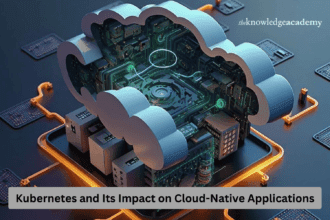
On-demand technology is revolutionizing how we consume and deliver digital content in today’s fast-paced world. Whether you’re streaming your favorite shows, accessing educational resources, or managing business content, understanding the fundamentals of modern content delivery is crucial. In this comprehensive guide, we’ll demystify on-demand technology and explore its essential components. From content distribution networks (CDNs) to adaptive streaming protocols, we’ll break down complex concepts into easy-to-understand explanations. Are you ready to:
• Master the basics of content delivery systems
• Understand how content reaches your devices instantly
• Learn about the technology powering your favorite streaming services
• Discover optimization techniques
for better content distribution Whether you’re a curious beginner or a professional looking to expand your knowledge, this guide will equip you with a fundamental understanding of how modern content delivery works in our digital age.
Key Takeaways:
- Content Distribution Networks (CDNs) form the backbone of modern content delivery, ensuring fast and reliable access to digital content across different devices and locations.
- Adaptive streaming protocols automatically adjust content quality based on the user’s internet connection, providing seamless viewing experiences for streaming services.
- On-demand services span multiple industries, from entertainment platforms like Spectrum TV to healthcare solutions like Labcorp OnDemand, offering convenient access to services and content.
- The technology relies on high-power calculation capabilities and sophisticated data visualization tools to manage and distribute content efficiently.
- Modern content delivery systems integrate various components, including client software, command-line interfaces, and advanced security protocols, to ensure optimal service delivery.
What is On-Demand Technology
On-demand technology revolutionizes how we access and consume digital content, services, and resources in real time. It’s the backbone of modern content delivery systems that respond instantly to user requests, providing immediate access to desired information or services.
Instant Accessibility
On-demand technology enables users to access content whenever and wherever they want. Unlike traditional scheduled programming, this technology eliminates the need to wait for specific broadcast times or physical media delivery. Users can stream movies, download documents, or access services with just a few clicks.
User-Centric Approach
The technology prioritizes user convenience by offering personalized experiences. It adapts to individual preferences and usage patterns, ensuring that content delivery aligns with specific user needs. This customization extends across various platforms and devices, maintaining consistency in service quality.
Real-Time Processing
At its core, on-demand technology relies on sophisticated real-time processing systems. These systems handle multiple simultaneous requests, manage data streams, and ensure smooth content delivery. The technology continuously monitors and adjusts resource allocation to maintain optimal performance.
Scalable Infrastructure
Modern on-demand systems are built on scalable infrastructure that can handle varying loads. Whether serving a single user or millions simultaneously, the technology maintains consistent performance through dynamic resource allocation and load balancing.
Integration Capabilities
On-demand technology seamlessly integrates with various platforms and services. This interconnectivity allows for unified content delivery across different devices and platforms, ensuring a consistent user experience regardless of how users access the content.
Core Components of Modern Content Delivery
Modern content delivery systems are built on several fundamental components that work together seamlessly to ensure the efficient distribution of digital content. Let’s explore these essential elements that power today’s content delivery infrastructure.
Content Distribution Networks (CDNs)
CDNs form the backbone of modern content delivery, consisting of strategically placed servers worldwide. These networks reduce latency by storing cached copies of content closer to end users. When a user requests content, it’s delivered from the nearest server rather than the origin, ensuring faster load times and better performance.
The distributed nature of CDNs also provides built-in redundancy. If one server fails, others can instantly take over, maintaining uninterrupted content delivery. This network of servers helps handle traffic spikes and protects against DDoS attacks.
Content Management Systems (CMS)
A robust CMS serves as the central hub for content organization and delivery. It enables content creators and administrators to efficiently manage, update, and distribute digital assets across various platforms. Modern CMS platforms offer features like version control, workflow management, and content scheduling.
These systems also support multiple content formats, from text and images to videos and interactive elements. They provide tools for content optimization, ensuring assets are properly formatted and compressed for efficient delivery. The CMS integrates with other delivery components, automating many aspects of the content distribution process.
Storage and Processing Infrastructure
The foundation of content delivery relies on sophisticated storage solutions and processing capabilities. Cloud-based storage systems offer scalability and flexibility, allowing organizations to adjust resources based on demand. These systems employ advanced compression algorithms and caching mechanisms to optimize storage efficiency.
Processing infrastructure handles tasks like transcoding, which converts content into different formats suitable for various devices and bandwidth conditions. This ensures users receive content optimized for their specific viewing conditions, whether they’re on a mobile device or a desktop computer.
Popular On-Demand Service Platforms
Streaming Entertainment Platforms
Netflix leads the pack in on-demand entertainment, revolutionizing how we consume media. With its vast library of movies, TV shows, and original content, it has set the benchmark for streaming services. Amazon Prime Video follows closely, offering not just entertainment but integrating seamlessly with its broader e-commerce ecosystem.
Disney+ has made a significant impact since its launch, bringing beloved franchises and exclusive content to viewers worldwide. HBO Max stands out with its premium content library, featuring critically acclaimed series and blockbuster movies.
Business and Education Platforms
LinkedIn Learning has transformed professional development, offering on-demand courses across various industries. The platform’s integration with LinkedIn’s professional network makes it a powerful tool for career advancement.
Coursera partners with top universities worldwide to provide accessible education. Their flexible learning model allows students to access quality education at their own pace. Udemy’s marketplace model enables experts to share their knowledge through comprehensive video courses.
In the business sector, Salesforce has pioneered Software-as-a-Service (SaaS), providing on-demand access to powerful customer relationship management tools. Microsoft 365 delivers essential business applications through cloud-based services, enabling remote work and collaboration.
These platforms demonstrate the versatility of on-demand technology across different sectors, from entertainment to education and business solutions. Each platform leverages unique features to serve its specific audience while maintaining the core benefits of accessibility and convenience.
Service Levels and Pricing Models
Subscription-Based Models
On-demand technology services typically offer tiered subscription plans to cater to different user needs and budgets. Basic plans often include essential features like standard streaming quality and limited concurrent streams, while premium tiers unlock advanced capabilities such as 4K resolution and multiple device access.
Pay-Per-Use Structure
Some platforms implement a pay-as-you-go model, where users are charged based on their actual content consumption. This approach benefits occasional users who prefer flexibility over long-term commitments, allowing them to pay only for what they use.
Enterprise Solutions
For businesses and organizations, customized service packages are available with specialized features like content management systems, analytics tools, and dedicated support. These solutions often come with service level agreements (SLAs) guaranteeing specific performance metrics and uptime.
Quality of Service Guarantees
Service providers typically outline specific performance benchmarks in their agreements, including:
– Minimum uptime percentage
– Maximum latency thresholds
– Content delivery speed
– Technical support response times
– Buffer-free streaming guarantees
Scalability Options
Modern content delivery platforms offer dynamic scaling capabilities, allowing users to adjust their service levels based on demand. This flexibility ensures cost-effectiveness while maintaining optimal performance during peak usage periods.
Implementation and Access Methods
Cloud-Based Solutions
On-demand technology primarily leverages cloud infrastructure for content delivery. Leading providers like Amazon Web Services (AWS), Google Cloud, and Microsoft Azure offer robust platforms that enable seamless content streaming. These solutions provide scalable storage, efficient content distribution networks (CDNs), and reliable server infrastructure.
Cloud platforms ensure high availability and performance through distributed data centers. They automatically handle traffic spikes and maintain consistent delivery speeds across different geographical locations. This infrastructure allows content providers to focus on creating and managing content rather than worrying about technical complexities.
Integration Methods
Implementing on-demand technology requires careful consideration of integration approaches. RESTful APIs serve as the foundation for connecting various system components. These APIs enable smooth communication between content storage, delivery systems, and user interfaces.
Content providers can choose between custom-built solutions or pre-configured platforms. Custom solutions offer greater flexibility but require more development resources. Pre-configured platforms provide faster deployment with standardized features.
The integration process typically involves:
– Setting up content storage systems
– Configuring CDN settings
– Implementing authentication mechanisms
– Establishing API endpoints
– Creating user interfaces
For optimal performance, organizations should implement caching strategies and load balancing. These technical considerations ensure smooth content delivery even during peak usage periods.
Security and Privacy Considerations
In today’s digital landscape, protecting content and user data is paramount. Content delivery platforms must implement robust security measures to safeguard sensitive information and maintain user trust.
Data Encryption Standards
Modern content delivery systems employ end-to-end encryption to protect data during transmission. This ensures that content remains secure from unauthorized access while traveling between servers and end-users. Advanced encryption protocols like SSL/TLS create a secure tunnel for data transfer, making it virtually impossible for malicious actors to intercept content.
Access Control Mechanisms
Implementing strict access controls is crucial for content security. This includes multi-factor authentication, role-based access control (RBAC), and IP whitelisting. These measures ensure that only authorized users can access specific content, preventing unauthorized distribution and protecting intellectual property rights.
Privacy Policy Compliance
Content delivery platforms must adhere to international privacy regulations like GDPR and CCPA. This involves transparent data collection practices, user consent management, and proper handling of personal information. Organizations need to regularly update their privacy policies and inform users about how their data is collected, stored, and used.
Content Protection Features
Digital Rights Management (DRM) systems help prevent unauthorized content sharing and piracy. These systems include watermarking, content encryption, and playback restrictions. Additionally, implementing secure token authentication helps verify legitimate content requests and prevents unauthorized access attempts.
Regular Security Audits
Conducting periodic security assessments helps identify and address potential vulnerabilities. This includes penetration testing, vulnerability scanning, and compliance audits. Regular monitoring and updating of security protocols ensure the platform remains protected against emerging threats and cyber attacks.
Future Trends and Innovations
The landscape of on-demand technology continues to evolve rapidly, bringing exciting innovations that shape how we consume and distribute digital content.
AI-Powered Content Delivery
Artificial Intelligence is revolutionizing content delivery systems by predicting user preferences and optimizing delivery paths. Smart algorithms analyze viewing patterns, automatically adjust streaming quality, and ensure seamless content distribution even during peak usage periods.
Edge Computing Integration
The rise of edge computing is transforming content delivery networks. By processing data closer to end-users, edge computing reduces latency and improves overall performance. This technology enables faster content access and enhanced user experiences, particularly for streaming services and interactive content.
5G Network Expansion
The widespread adoption of 5G networks is set to revolutionize on-demand content delivery. With speeds up to 100 times faster than 4G, 5G enables instant content access, superior video quality, and support for emerging technologies like augmented reality (AR) and virtual reality (VR) streaming.
Blockchain in Content Distribution
Blockchain technology is emerging as a game-changer for content rights management and distribution. It ensures transparent content ownership, secure digital rights management, and fair compensation for content creators through smart contracts.
Personalization at Scale
Advanced analytics and machine learning are enabling hyper-personalized content experiences. Systems can now deliver tailored recommendations, adaptive content formats, and customized viewing experiences based on individual user preferences and behaviors.
Sustainable Content Delivery
Environmental consciousness is driving innovations in green content delivery solutions. Energy-efficient servers, optimized data transmission protocols, and sustainable CDN practices are becoming industry priorities to reduce the carbon footprint of digital content distribution.
Conclusion
As we’ve explored the transformative world of on-demand technology and modern content delivery systems, it’s clear that understanding these fundamentals is essential in today’s digital landscape. From content distribution networks to adaptive streaming protocols, these technologies continue to shape how we access and consume digital content. By mastering these concepts, you’re better equipped to optimize your content delivery strategies, whether you’re a content creator, business professional, or simply an enthusiast looking to understand the technology behind your favorite streaming services.
The future of digital content delivery promises even more innovations, making this knowledge increasingly valuable. Take the next step in your journey by exploring specific content delivery networks, experimenting with different streaming protocols, or optimizing your current content distribution methods. Stay informed about the latest developments in on-demand technology to ensure you’re always at the forefront of modern content delivery solutions.
FAQs
How does on-demand technology differ from traditional content delivery methods?
On-demand technology provides instant access to content whenever users request it, unlike traditional methods that follow fixed schedules. It offers personalized experiences through digital platforms, allowing users to consume content at their convenience using various devices and internet connectivity.
What security measures are typically implemented in on-demand content delivery systems?
Modern on-demand systems employ multiple security layers including end-to-end encryption, secure authentication protocols, and DRM (Digital Rights Management). They also utilize advanced firewalls and regular security audits to protect sensitive data and ensure safe content delivery.
Can on-demand technology work effectively in areas with limited internet connectivity?
Yes, many on-demand services now offer offline downloading capabilities and adaptive streaming technologies. These features adjust content quality based on available bandwidth and allow users to access content even in areas with poor internet connectivity.
What role does cloud computing play in on-demand content delivery?
Cloud computing serves as the backbone of on-demand content delivery by providing scalable storage, efficient data processing, and seamless content distribution. It enables high-power calculation and data visualization while maintaining optimal performance during peak usage periods.
How is on-demand technology transforming healthcare services?
On-demand technology is revolutionizing healthcare through services like labcorp on-demand testing and at-home collection kits. It provides convenient access to laboratory tests, authorized healthcare provider services, and medical consultations through digital platforms.
What are the cost implications of implementing on-demand technology for businesses?
Implementation costs vary based on the level of service and scale of operations. While initial setup may require significant investment, the standard rate often becomes cost-effective long-term through reduced infrastructure needs and improved operational efficiency.




![Import PST to Zoho Account Directly [Best Approach!]](https://techbii.com/wp-content/uploads/2025/02/https-lh7-rt-googleusercontent-com-docsz-ad_4nxd-150x150.png)



